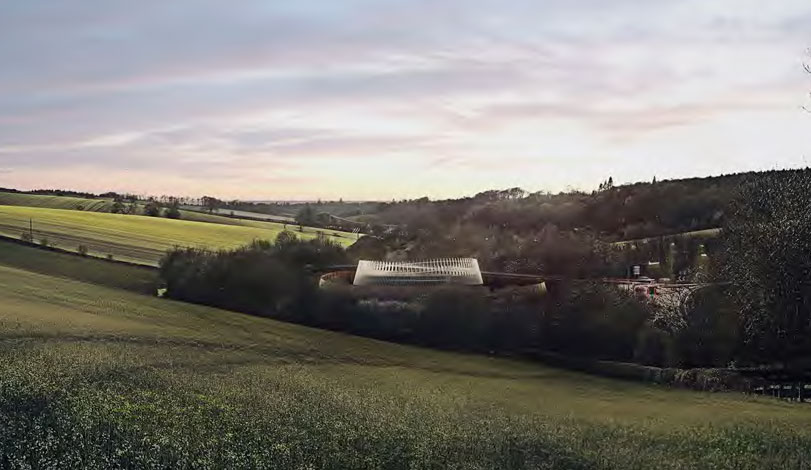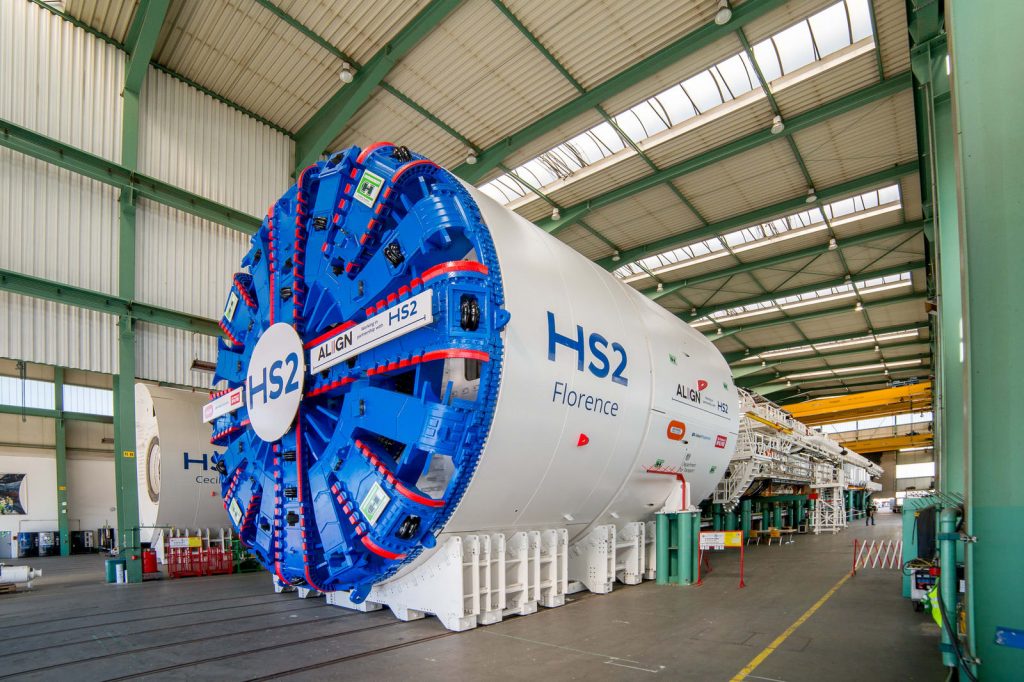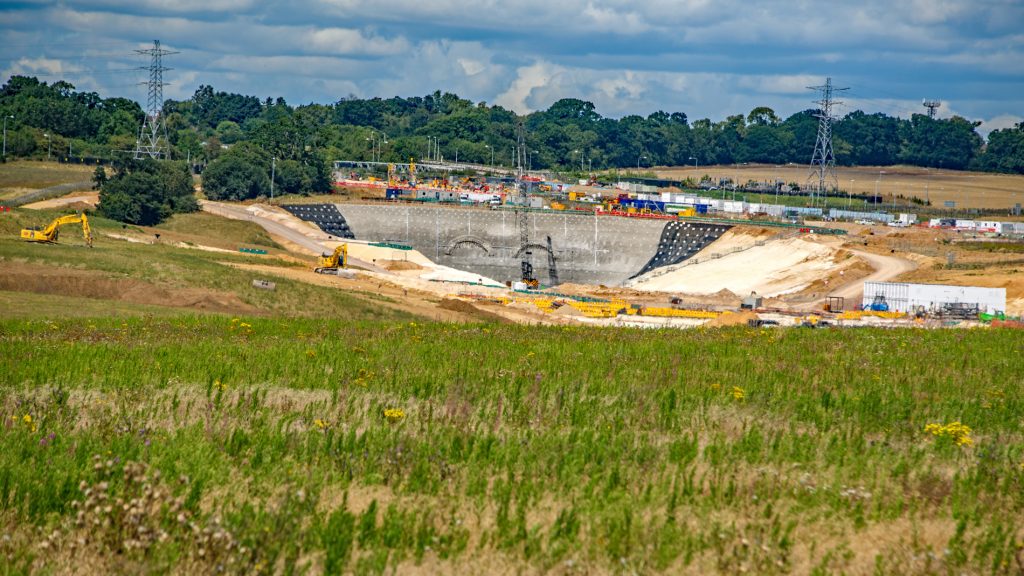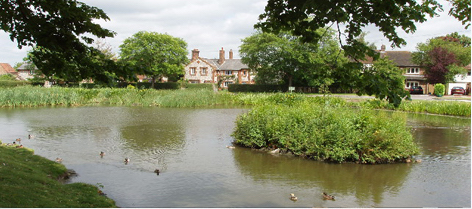HS2 preparation work steps up a gear in the area next month (September):
- In Chalfont St Peter construction of the 60 metre deep Chalfont vent shaft will begin. A 400 metre temporary road to take construction lorries from the site to the A413 was completed earlier this month.
- Changes to road junctions on the A413 between Amersham and Wendover will also get underway enabling them to cope with construction traffic over the next three or four years.
- Ground investigation and test drilling will be taking place in the areas around the proposed South Heath vent shaft, the Mantles Wood vent shaft at Hyde Heath and the Little Missenden vent shaft site.
- The widening of the A413 at Great Missenden, delayed because of the coronavirus restrictions, should be completed by October.
- Two ponds will be drained at Bury Farm and Park Hall near South Heath and the newts and reptiles that live there will be moved to another habitat nearby. “Newt fences” are to be constructed designed to prevent newts entering the HS2 work site.
- A team of archeologists arrived at South Heath last week and will spend the next six weeks digging exploratory trenches at Grove Farm and sites by Rocky Lane and Nash Lee Road. So far archeologists have been surprised by the amount of Iron Age finds they have made on the proposed HS2 route through the Chilterns.
Can a vent shaft become a thing of beauty?

Right from the beginning HS2 said the design of bridges, tunnel entrances and other railway paraphernalia would be of the highest quality in the Chilterns Area of Outstanding Natural Beauty.
So far there’s been little sign of it. The proposed viaduct near the Wendover roundabout on the A413 looks like any other bog-standard concrete flyover, although final designs are yet to be submitted.
The final design of the massive 3.4km (2.1mile) viaduct over the lakes of the Colne Valley Regional Park at Denham is also yet to be produced. The artist impression produced a couple of years ago looked elegant – artist’s impressions never look ugly – and it had fancy innovations like invisible light and sound barriers to prevent birds and bats flying into trains. But at the end of the day it is an enormous piece of infrastructure passing over a low, water-filled wildlife reserve, and there’s no disguising that.
However the design for the ventilation shaft being built by the roundabout near Amersham Hospital was revealed this week and it is fair to say the architects seem to have done what they can to make it look like a landmark that will not look too out of place.
A spiral shaped steel wall, decorated with a pattern “inspired by woodland foliage” surrounds the headhouse over the 18 metre deep ventilation shaft leading to the twin tunnels underneath. The main building is conical in shape and its exterior walls comprising gabions (cages) filled with flint. “The top of the building is crowned by an array of anodised aluminium fins, set out to respond to the shape of the surrounding valley and longer-distance views,” enthuses the architects, Grimshaw, whose portfolio includes Waterloo international station and the Eden Project.
Perhaps not a major visitor attraction of the future. But at least better than the barn-like buildings they are proposing for the other vent shafts. HS2 say the designs are “inspired by locals barns and other agricultural buildings”. Opponents say they’ll stick out like a sore thumb.
The gravy train
The lawyers are doing almost as well as the contractors out of the HS2 project.
When Hillingdon Council refused a HS2 planning application for work to be started on a site of archaeological importance near Uxbridge because they said they weren’t provided with enough information, the company challenged the decision in the High Court and won. But the council then went to the Court of Appeal and won the appeal earlier this month. The Government was ordered to pick up the council’s legal bills.
Meanwhile, in the Business and Property Court this week, HS2 sought an extension of an injunction preventing protestors from disrupting work around land off Harvil Road in Hillingdon. Protestors have been camped outside the site for three years, often leading to scuffles and stand-offs with security staff. The protestors say they are carrying out “monitoring” work. The company told the court the protest had cost them an additional £16m in costs and caused “considerable delays.” A decision is due soon.
Beaconsfield prepares…
Road workers are spending August widening the A355 and highways around the London End roundabout in Beaconsfield in preparation for HS2 construction vehicles.
When the lorry traffic reaches its peak – around 400 HGVs a day through Beaconsfield in 2024 – it is anticipated that they will not use the London End roundabout because the new relief road from Maxwell Road to the A40 will have been completed. However the local conservation group, the Beaconsfield Society, said this week it fears the relief road will not be completed on time and is seeking reassurance.
Diversions to nowhere
The Chiltern Society is to meet with HS2 contractors and the HS2 Construction Commissioner following complaints from walkers and riders about public footpath/ bridlepath closures, confusing diversions and inadequate signage on diversions around HS2 sites. Some ramblers/cyclists have complained about being stranded and lost after diversion signs disappeared.
Grindingly slow; impressively boring

A massive 17 metre wall that will be part of the southern entrance to the 16km (10 mile) Chiltern tunnel near Denham was completed this month. It took builders seven months to complete and only four days were lost while workers and machines complied with coronavirus precautions.
The wall – known as a headwall – has 636 “nails” holding it to its concrete lining. These are no ordinary nails however…some are 20 metres long comprising of steel or glass fibre reinforced polymer. Using specialised equipment they take up to two hours each to ram home.
Over in Germany the two giant tunnel boring machines – 170 metres long and weighing 2,000 tonnes each – that will grind their way through the Chilterns chalk are now completed. It is going to take them some time to get here and some time to finish the job. They should be on site by the end of the year, begin drilling sometime next year and take at least three years to reach the northern exit near South Heath.

